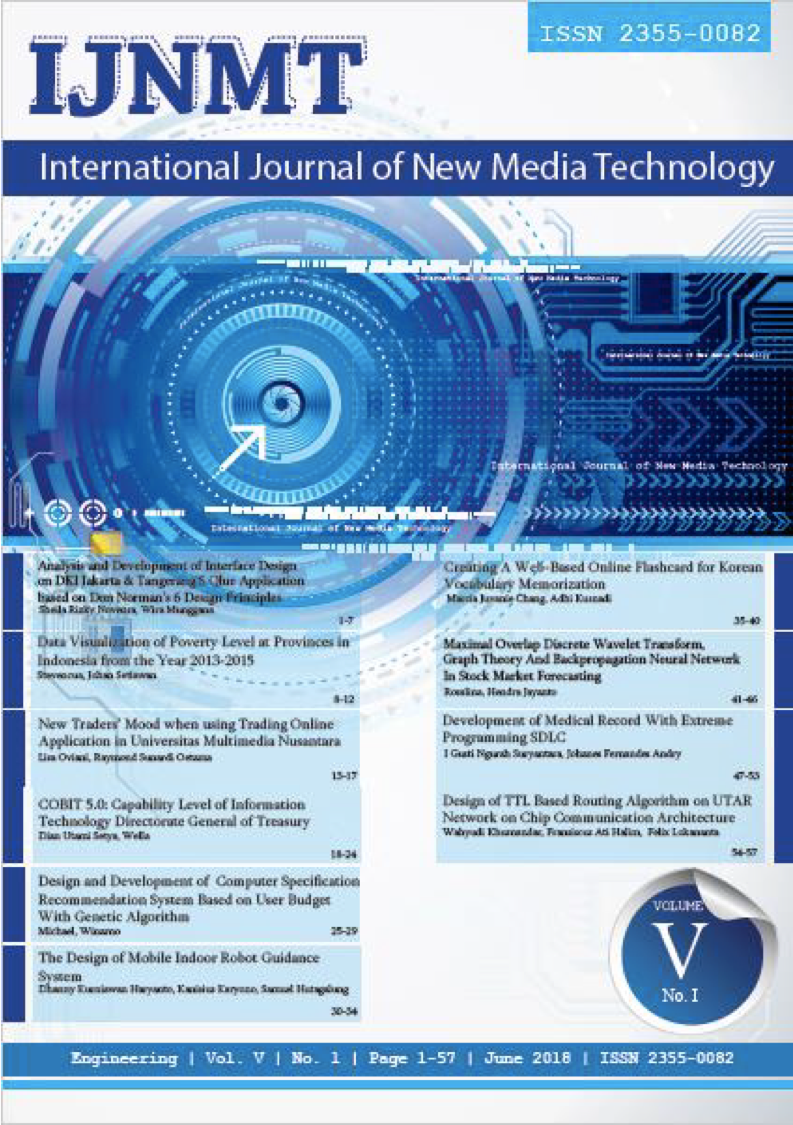Creating A Web-Based Online Flashcard for Korean Vocabulary Memorization
DOI:
https://doi.org/10.31937/ijnmt.v5i1.625Abstract
The Korean language is one of the most enthused language these days, mainly caused by the Hallyu wave. In traditional language learning techniques, flashcards are often used to help memorize simple syllables. Nowadays, online flashcards are used as a replacement for the traditional flashcards, which are proven to be more effective in many ways. However, the lack of use of appropriate methods to learn a new language will result in slower learning process. Therefore, by implementing a suitable method such as the Leitner method to an online flashcard will improve the learning process. The Leitner method sets aside the questions that can be answered easily and allows users to focus on questions that cannot be recalled consistently by distributing a set of questions in five different sections. Every question that can be answered by the user is moved to the next compartment, where the question will be repeated after a specified period of time. System usability scale is used to measure the usability of the application. This application has been successfully designed and built using the Leitner method to give the user the suitable interval of time for learning with flashcards and achieved a system usability scale score of 82,5.
Index Terms” Leitner, Online flashcard, Laravel, Korean language.
Downloads
Downloads
Published
How to Cite
Issue
Section
License
Authors retain copyright and grant the journal right of first publication with the work simultaneously licensed under a Creative Commons Attribution-ShareAlike International License (CC-BY-SA 4.0) that allows others to share the work with an acknowledgement of the work's authorship and initial publication in this journal.
Authors are able to enter into separate, additional contractual arrangements for the non-exclusive distribution of the journal's published version of the work (e.g., post it to an institutional repository or publish it in a book), with an acknowledgement of its initial publication in this journal.
Copyright without Restrictions
The journal allows the author(s) to hold the copyright without restrictions and will retain publishing rights without restrictions.
The submitted papers are assumed to contain no proprietary material unprotected by patent or patent application; responsibility for technical content and for protection of proprietary material rests solely with the author(s) and their organizations and is not the responsibility of the IJNMT or its Editorial Staff. The main (first/corresponding) author is responsible for ensuring that the article has been seen and approved by all the other authors. It is the responsibility of the author to obtain all necessary copyright release permissions for the use of any copyrighted materials in the manuscript prior to the submission.















